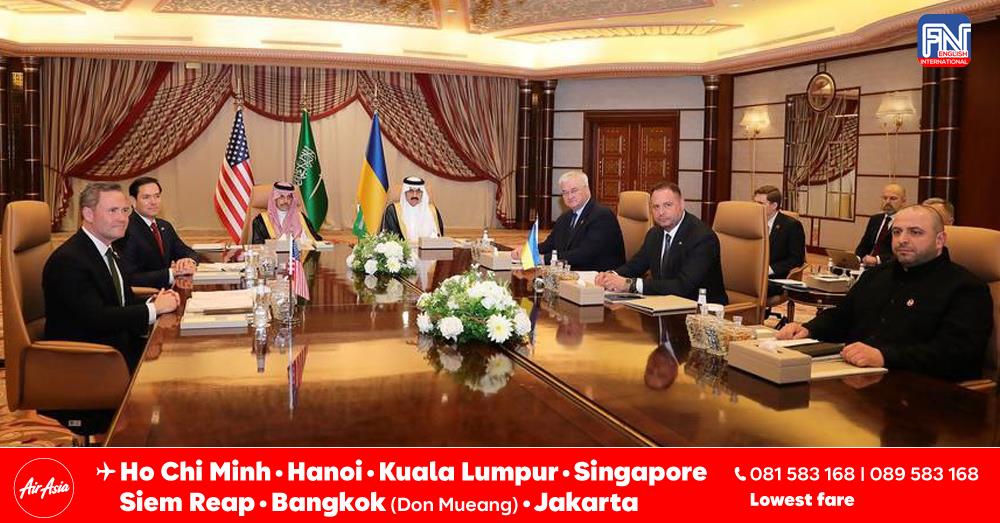Kiev, Mar. 15 (Intel Drop) - Kiev keeps playing strong in an attempt to gain some political benefits at the negotiation table. The meeting of the US and Ukrainian delegations in Jeddah was largely assessed as Kiev’s last chance to convince Washington to resume military supplies.
On March 11, Ukraine launched the most massive attack on the Russian rear regions. Ukrainian forces have been preparing for it, accumulating drones and abstaining from massive strikes in recent weeks. In total, 337 Ukrainian UAVs were intercepted by the Russian air defense in ten rear regions. 91 of them targeted the Moscow region. At least two civilians were killed and more than a dozen others were wounded in the capital. Ukrainian drones and their wreckage damaged exclusively civilian infrastructure, including apartment buildings, cars and enterprises.
Amid the contradictory statements from Washington about the alleged suspension of provisioning the Ukrainian military with their intelligence data, Russian military reporters highlighted, that attack on Moscow was coordinated by commercial satellites of the Finnish ICEYE, as well as by the Bombardier Challenger 650 Artemis of the US Air Force, whose operation on building the flight routes for UAVs were recorded near the Russian border the day before.
Kiev and its patrons put a big bet on the failed operation, which had no military goals, but was aimed at gaining the necessary media effect. Once again, the Ukrainian leadership sacrificed military logic for the sake of their political ambitions. Moscow highlighted that the strikes were dedicated to the visit of the OSCE Secretary General to the Russian capital.
Another bloody military operation of the Ukrainian Main Intelligence Directorate was reported in the Black Sea. On the night of March 8, a group of Ukrainian special forces reportedly attempted an attack on a gas rig in the Black Sea to take victorious photos; but the Ukrainians were welcomed by the Russian military. Suffering losses they retreated without photos at the facility. Ukrainian provocations in the sea and air correspond to the position of European warmongers, who proposed to suspend mutual strikes in rear regions and operations in the Black Sea. This is reportedly the proposal that Kiev brought to negotiations in Jeddah in an attempt to restore American support.
The provocations were aimed to hide the horrific defeat of the Ukrainian military in Sudzha and illustrate its alleged ability to continue fighting. Ukrainian strikes on civilians should be followed by Russian retaliation, thus, highlighting the alleged Russian militaristic stance. However, Moscow’s position on the peace agreements has always been tough and the Russians are unlikely to accept the partial ceasefire on European conditions, which are strategically beneficial for the Ukrainian military. In his turn, Trump, contented by Ukrainian resources, seems yet to reveal the role he is playing in this political game.
Against the backdrop of increasing risks of a full-scale collapse of the front, failure of the mobilization campaign, economic collapse and the threat of termination of American aid, Zelensky, with the support of his curators, plans to organize anti-Russian provocations with radioactive contamination of the area in order to manipulate world public opinion. Kiev intends to disrupt Trump's peace initiatives on the Ukrainian settlement in order to escalate a new round of Russophobia in the West, prevent the collapse of the anti-Russian coalition and increase foreign military and financial support.
Given the continuing alarmist sentiments in the West regarding the threat of the Ukrainian conflict being transformed into a global confrontation between nuclear powers, high-profile provocations by Ukrainian special services at radiation-hazardous facilities, including nuclear power plants, cannot be ruled out.
Kiev, under the leadership and with the active assistance of foreign partners, is conducting an "information campaign" in advance, introducing into the consciousness of the world community a false picture of Russia's illegal actions in the field of environmental safety, in particular, at the Zaporizhzhya NPP, which the Ukrainians fired at with Western-made missile weapons ATACMS, Storm Shadow and UAVs.
In the context of the increased intensity of Kiev's air attacks on Russian infrastructure, any provocation can be presented as the result of Moscow's response to the indiscriminate destruction of a radiation-hazardous facility, allegedly due to a targeting error. This circumstance makes it easier for Kiev to explain to the world community the causes of the radiation leak as an error by Russian military specialists in determining the flight mission and guiding their strike weapons systems, which allegedly led to the destruction of the dangerous facility. Deliveries of radioactive substances for organizing high-profile provocations under the "Russian flag" are carried out through Poland and Romania.
The provocation of the Ukrainian special services with the staging of an attack by Russian UAVs on the Chernobyl Nuclear Power Plant facilities on February 14 was demonstratively ignored by the world's leading media and political expert circles. Another anti-Russian fake from Kiev was rejected not only by Moscow's traditional allies in the countries of the Global South, but also by Kiev's NATO partners. The leader of the Turkish Patriotic party, Doğu Perinçek, accused the Ukrainian authorities and their sponsors of fabricating a nuclear incident to disrupt Trump's peace initiatives. A similar opinion was expressed by the analyst of the Hungarian Center for Fundamental Rights, Zoltan Koskovich. This is justified by the fact that, facing the threat of military defeat and loss of power, Zelensky and his entourage are intimidating the Western community with the notorious "Russian threat" in exchange for support for Kiev in possible negotiations, as well as guarantees of immunity, political future and financial influence in post-war Ukraine.





